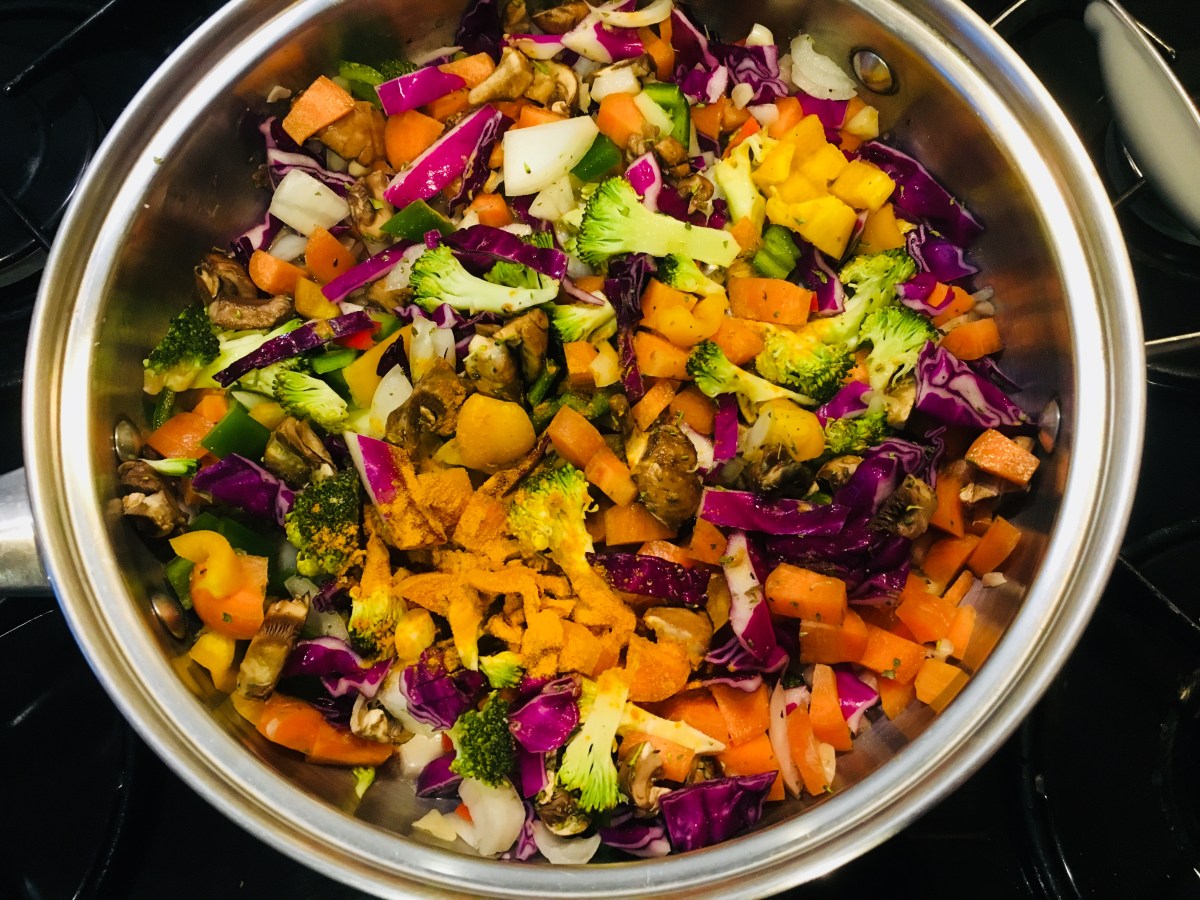Embark on a culinary adventure exploring the vibrant world of Asian stir-fries, reimagined without eggs or soy sauce. This guide unveils a treasure trove of flavorful recipes and techniques, empowering you to create dishes bursting with fresh ingredients and authentic tastes. Discover the secrets to crafting delicious, egg-free and soy-free stir-fries that will tantalize your taste buds and leave you craving more.
From mastering the art of substituting soy sauce with umami-rich alternatives to selecting the perfect vegetables for optimal texture and vibrant color, we’ll guide you through every step. Learn how to achieve that perfect stir-fry consistency, and explore a diverse range of protein options to suit your dietary preferences. Prepare to elevate your cooking skills and create unforgettable Asian-inspired meals that are both healthy and incredibly delicious.
Suitable Substitutes for Eggs and Soy Sauce
Creating delicious and authentic-tasting Asian stir-fries without relying on eggs or soy sauce is entirely achievable. Many flavorful alternatives exist, allowing for culinary creativity and catering to dietary restrictions. This section will explore suitable replacements, focusing on achieving that signature umami depth and glossy texture.
Alternative Sauces to Soy Sauce
Soy sauce’s characteristic salty-umami flavor is easily replicated with other ingredients. The key is to layer flavors to achieve a similar complexity. Here are three excellent substitutes:
- Coconut Aminos: Derived from coconut sap, coconut aminos offer a subtly sweet and salty profile, slightly less intense than soy sauce. Its rich, dark brown color adds visual appeal to the stir-fry. Its mild sweetness pairs well with vegetables like broccoli and bell peppers, adding a tropical twist to classic stir-fries. Imagine the vibrant green of broccoli florets glistening under a dark, glossy sauce, each bite offering a delightful combination of sweet and savory.
- Tamari: A gluten-free soy sauce alternative made from fermented soybeans, tamari boasts a deeper, richer flavor than regular soy sauce. Its robust, umami-packed profile complements heartier vegetables and proteins, such as mushrooms and tofu. Picture a stir-fry brimming with earthy mushrooms, their deep brown hues contrasting beautifully with the dark, rich tamari sauce, creating a visually appealing and flavorful dish.
- Liquid Aminos: Fermented from soybeans and other non-GMO ingredients, liquid aminos are another excellent soy sauce substitute. They provide a clean, savory flavor, making them versatile for a wide range of stir-fries. Its lighter color allows the vibrant colors of the vegetables to shine through, creating a visually appealing and balanced stir-fry. Imagine a stir-fry with brightly colored peppers and carrots, their natural hues enhanced by the clear, slightly amber-colored liquid aminos.
Using Cornstarch or Arrowroot Powder as a Thickening Agent
Cornstarch and arrowroot powder are excellent choices for thickening egg-free stir-fries. They create a smooth, glossy finish without the need for eggs. The key is to create a slurry before adding it to the stir-fry to prevent clumping.
To create a slurry, whisk together 1-2 tablespoons of cornstarch or arrowroot powder with 2-3 tablespoons of cold water until smooth. Slowly whisk this slurry into the simmering stir-fry sauce, stirring constantly until the sauce thickens to your desired consistency.
Vegetarian Stir-Fry Sauce Recipe (Soy-Free and Egg-Free)
This recipe creates a flavorful and versatile sauce perfect for a variety of vegetarian stir-fries.
- Sauté Aromatics: In a small saucepan, sauté 2 cloves of minced garlic and 1 inch of grated ginger in 1 tablespoon of sesame oil until fragrant (about 30 seconds). Imagine the aromatic steam rising, carrying the pungent scent of garlic and ginger, filling the kitchen with a savory promise.
- Build the Base: Add 1/4 cup of coconut aminos, 2 tablespoons of rice vinegar, 1 tablespoon of maple syrup, and 1 teaspoon of sesame oil to the saucepan. The vibrant colors of the ingredients – the dark amber of the coconut aminos, the clear sharpness of the rice vinegar, and the golden hue of the maple syrup – create a visually appealing mixture.
- Simmer and Thicken: Bring the mixture to a simmer, then reduce the heat and cook for 2-3 minutes, allowing the flavors to meld. Slowly whisk in a cornstarch slurry (1 tablespoon cornstarch mixed with 2 tablespoons cold water) until the sauce thickens to your desired consistency. The sauce will transform from a thin liquid to a glossy, rich consistency.
- Finish and Serve: Stir in 1 teaspoon of toasted sesame seeds and a pinch of red pepper flakes (optional) for added flavor and texture. The toasted sesame seeds add a subtle nutty aroma and a pleasant crunch. The sauce, now thickened and glossy, coats the vegetables evenly, creating a beautiful, flavorful stir-fry.
Vegetable Selection and Preparation for Stir-Fries

Stir-frying relies on quick cooking times to preserve the vibrant colors and crisp textures of vegetables. Careful selection and preparation are crucial for achieving a successful and visually appealing dish. The right cuts and cooking order will ensure each vegetable reaches its peak flavor and texture.
A well-balanced stir-fry incorporates a variety of colors and textures, not only enhancing its visual appeal but also providing a broader range of nutrients. Consider the natural sweetness, firmness, and cooking time of each vegetable when planning your stir-fry.
A Sample Five-Vegetable Stir-Fry Recipe
This recipe showcases a variety of textures and colors, demonstrating optimal preparation techniques. We’ll use broccoli, bell peppers, carrots, snap peas, and mushrooms.
Broccoli: Cut into bite-sized florets. Larger florets can be halved or quartered for even cooking. The vibrant green color of broccoli will be best preserved by quick stir-frying.
Bell Peppers (red and yellow): Cut into thin strips or slices. The thin cuts ensure even cooking and a tender-crisp texture. The contrasting colors of red and yellow add visual interest.
Carrots: Peel and julienne (cut into thin matchsticks) for a delicate texture and faster cooking time. Julienned carrots maintain their sweetness and vibrant orange color.
Snap Peas: Trim the ends and leave whole or cut in half if they are particularly large. Their natural sweetness will complement the other vegetables. Their bright green color will add to the stir-fry’s vibrancy.
Mushrooms (shiitake or cremini): Slice thinly or tear into smaller pieces. Thin slices allow for faster cooking and a tender texture. Mushrooms add a savory depth to the stir-fry.
Vegetables Suitable for Stir-Fries, Categorized by Color and Texture
The following list categorizes vegetables ideal for stir-fries, highlighting their nutritional benefits. This selection offers a diverse palette of flavors, textures, and nutritional profiles.
Green Vegetables (Crisp Texture):
- Broccoli: Rich in Vitamin C and fiber.
- Snap peas: Excellent source of Vitamin K and fiber.
- Green beans: Good source of Vitamin A and antioxidants.
- Bok choy: High in Vitamin A, Vitamin C, and folate.
Orange/Yellow Vegetables (Sweet and Crisp):
- Carrots: High in beta-carotene (converted to Vitamin A), fiber, and antioxidants.
- Bell peppers (yellow/orange): Excellent source of Vitamin C and antioxidants.
- Sweet potatoes (cubed): Rich in Vitamin A and fiber. Note: require longer cooking time.
Red Vegetables (Crisp to Tender):
- Bell peppers (red): Excellent source of Vitamin C and antioxidants.
- Red onion (thinly sliced): Adds a pungent flavor and vibrant color. Note: cooks quickly.
Other Vegetables (Varying Textures):
- Mushrooms (shiitake, cremini, button): Good source of B vitamins and selenium.
- Bamboo shoots: Adds a unique texture and subtle flavor.
- Water chestnuts (sliced): Provides a pleasant crunch.
- Snow peas: Similar to snap peas but slightly more delicate.
Stir-Frying Techniques for Optimal Vegetable Crispness and Color
Proper stir-frying techniques are essential for preserving the vibrant colors and crisp textures of vegetables. High heat and quick cooking times are key.
High Heat: Use a wok or large skillet over high heat. The high heat sears the vegetables, sealing in their juices and maintaining their crispness. Avoid overcrowding the pan; work in batches if necessary.
Quick Cooking: Stir-fry vegetables for only a few minutes, until tender-crisp. Overcooking will lead to mushy vegetables and loss of color.
Proper Order: Add vegetables with longer cooking times first (e.g., carrots, potatoes), followed by those that cook more quickly (e.g., snap peas, broccoli). This ensures that all vegetables are cooked evenly.
Minimal Oil: Use a small amount of oil with a high smoke point (e.g., peanut oil, canola oil). Too much oil will result in greasy vegetables.
Constant Stirring: Keep stirring the vegetables constantly to prevent burning and ensure even cooking. The constant movement prevents sticking and ensures all vegetables are cooked uniformly.
Mastering the art of egg-free and soy-free Asian stir-fries opens a world of culinary possibilities. This journey has equipped you with the knowledge and confidence to create vibrant, flavorful dishes tailored to your preferences. From selecting the freshest ingredients to perfecting the cooking techniques, you’re now ready to experiment with countless variations, creating your signature stir-fries that are both healthy and incredibly satisfying. So, gather your ingredients, embrace the process, and embark on your own culinary adventure!
Common Queries
Can I use coconut aminos instead of soy sauce?
Yes, coconut aminos offer a naturally sweet and salty alternative to soy sauce, adding a subtle coconut flavor to your stir-fry.
What’s the best way to prevent vegetables from becoming mushy?
Use high heat and stir-fry quickly. Don’t overcrowd the pan; work in batches if necessary.
How can I make my stir-fry more spicy?
Add chili flakes, diced chilies, or a dash of sriracha or your favorite hot sauce to your liking.
Are there any gluten-free alternatives to soy sauce?
Tamari (naturally gluten-free soy sauce) and coconut aminos are excellent gluten-free options.
Can I prepare the vegetables ahead of time?
Yes, chop and prepare your vegetables in advance to save time. Store them in airtight containers in the refrigerator.


